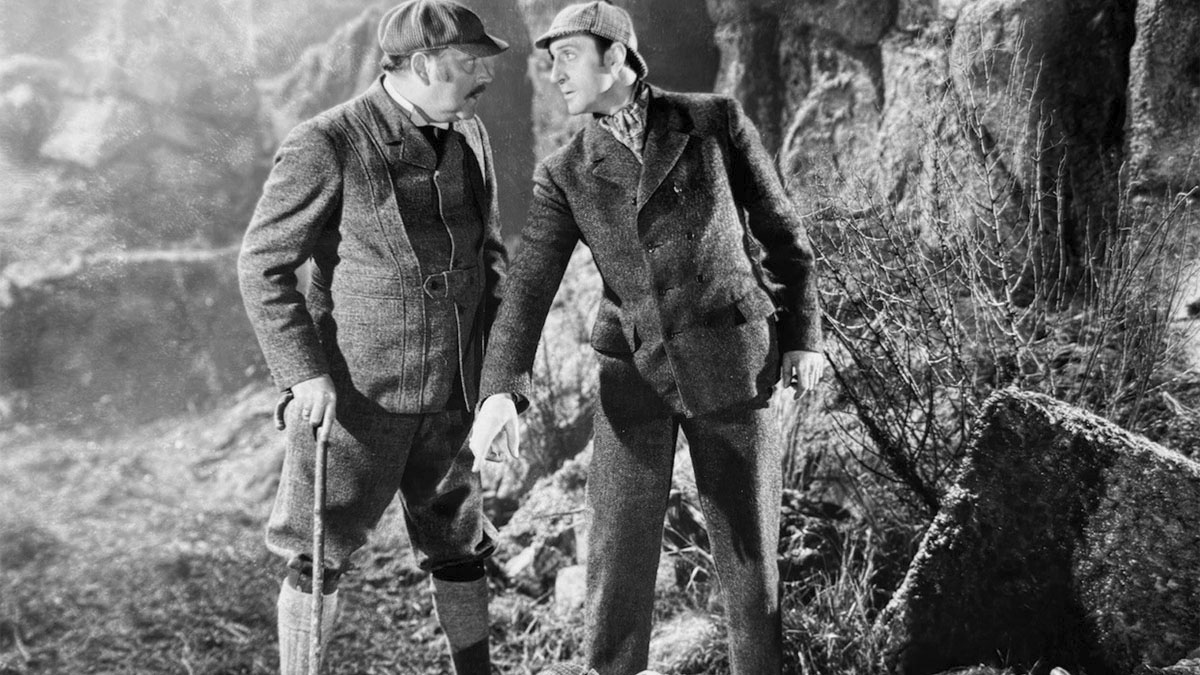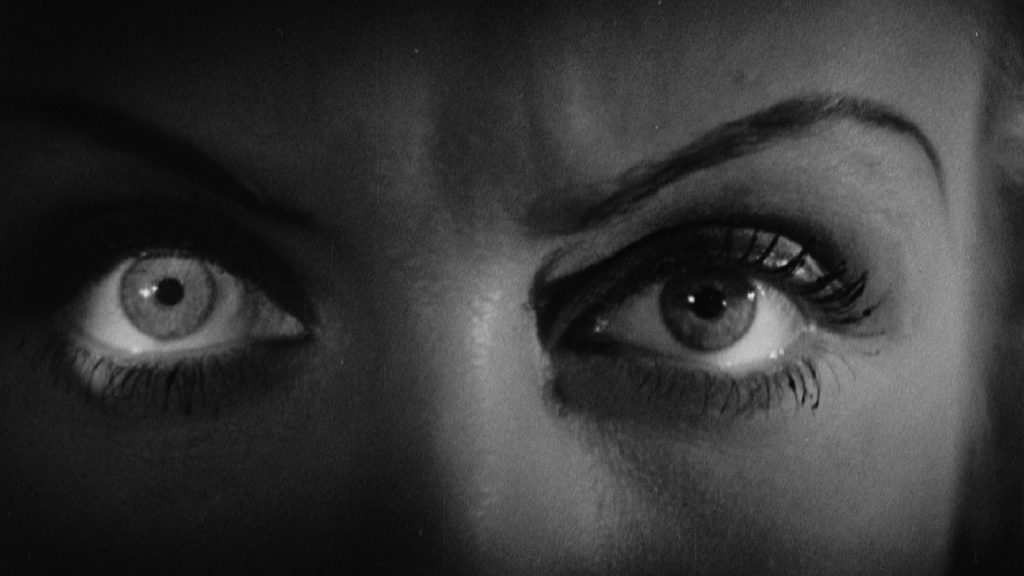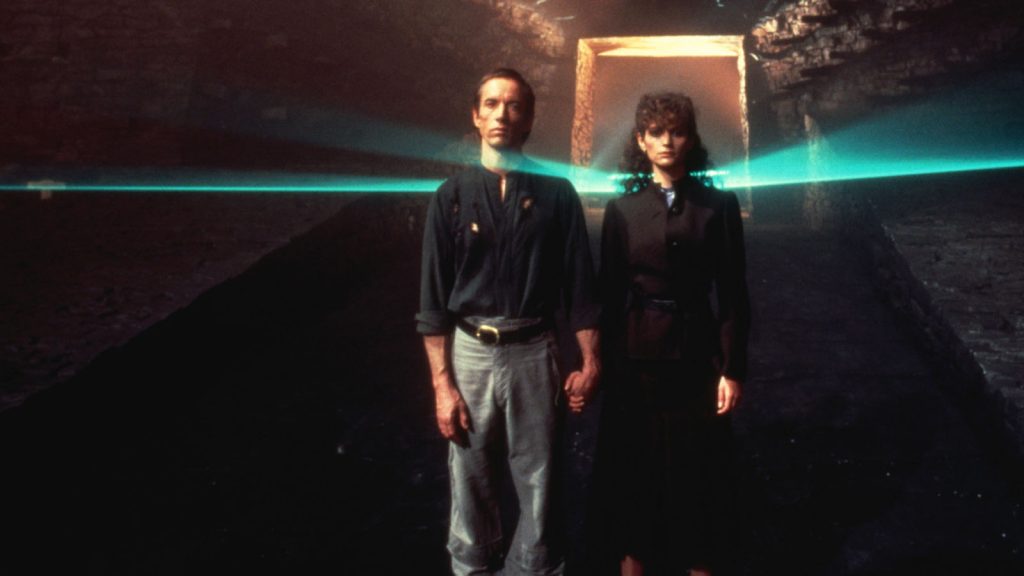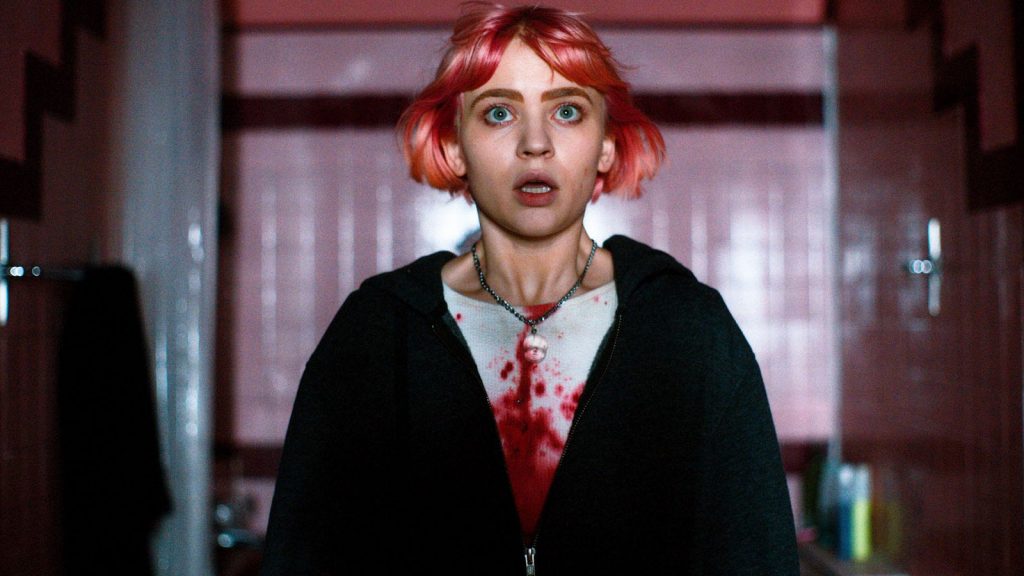
Arthur Conan Doyle’s Sherlock Holmes stories have never lacked for adaptations, with The Hound of the Baskervilles—novel number three out of four featuring the famed detective and his Boswell—being among the most tempting to tackle. You have a to-die-for—literally—setting with a foggy, craggy, quicksand-clotted moor, a spectral hound of terror, Neolithic stone huts, a family curse, candle signals and hellish howls in darkest nights, an ancient hall, and hearts giving out in fear. Based on such bullet-pointing, you may ask yourself, is this Conan Doyle or Edgar Allan Poe on a horror junket to England?
There was a time when prevailing wisdom dictated that Sherlock Holmes cinematic adaptations needed to be set in the same era as that film, which is ironic, given how Victorian period details are integral to the enveloping aspect of the original 56 stories and quartet of novels. We want to be sat deep in a chair of 221B Baker Street, with the smoke-choked air outside, the gas lamps having lately come on, with the sound of the horses’ shoes against the street as hansom cabs spirit Londoners away to their dinners and the theater.
Sidney Lanfield’s 1939 mounting of The Hound of the Baskervilles made the then rather bold decision to situate the story in 1889. It was the first of two movies—the other being The Adventures of Sherlock Holmes—that Basil Rathbone as Holmes and Nigel Bruce as Dr. John Watson would make for 20th Century Fox. From there, the franchise moved to Universal, where the duo left the Victorian world behind for one of cars, planes, and radios. Though all are watchable, and a couple are excellent, those 12 movies—talk about enterprising—aren’t of the same caliber as their Fox forerunners, both of which make for some of the most enjoyable cinematic fare in the whole of the 1930s, an outstanding decade indeed.
The ’39 Hound of the Baskervilles is pure atmosphere, replete with ghostlike fog, bottomless bogs, and a battery of strange noises that number among the most chilling in folk horror. The musical soundtrack is consigned to the opening and closing credits, with the rest of the film all but officially ambient—a brilliant choice. We’re also treated to John Carradine in one of his better roles as the butler Barryman (the name changed from Barrymore because of the towering fame of actor John Barrymore and his showbiz family). Gaunt, forever moving in shadows, Carradine’s Barryman is a living haunt, an ambulatory cadaver… but also maybe friendly enough? Call it part of the mystery within the mystery.

If you’ve read the book—or seen or heard enough adaptations, both on radio and the screen—you’ll recognize what lines have been excised and what parts of the narrative have been sped up. But don’t worry: the melancholic components of the foundational story—in which both terror and sadness infuse our beings as though carried jointly on a blustery moorland wind—are perpetually proximate. You could think of this as a literature-sourced horror film that the likes of Linus Van Pelt would ponder and recommend to the Great Pumpkin, as if the estimable Lord of the Gourd didn’t already know it, but high praise regardless.
Let us also commend the services of Nigel Bruce. His Watson—at this juncture—isn’t the bubbling boob he became with the Universal films. Bruce also played the character fairly straight in the Holmes radio show he did with Rathbone (and then Tom Conway after), but it’s the Watson characterization from the Universal run that people have always seemed to remember best, even if they’ve never seen those movies, paradoxically. Memory as associative groupthink, rather than with an experiential basis. And as we know, a lot of them were made, so it’s numbers advantage, too, with those Universal films having always been likelier to play on late-night television and seep into the public consciousness. But at no point in The Hound of the Baskervilles would you think, “Come on, Watson, don’t be an idiot.” He’s redoubtable, and a forerunner to the much-loved Watson of the Granada TV series that began in 1984.
Before performing “Behind Blue Eyes” circa 1971, The Who’s Pete Townshend would tell the audience that they lose drummer Keith Moon for a while in the song, but find him in the end. You could say the same about Holmes/Rathbone with The Hound of the Baskervilles. Watson does a goodly amount of the investigative legwork while Holmes is strategically offstage. Cherish the scene when they walk arm in arm from Holmes’s temporary digs in the stone hut back to the mullioned windows, wainscoted walls, and drafty long corridors of Baskerville Hall. Holmes takes Watson’s arm—not once, but twice, and it’s that second time—because they’d already broken away—that gets you.
The love they have for each other is evident. As is the idea that Holmes especially—because he knows more than Watson does at that point in the story—is horrified and saddened by what man, the ultimate monster, can do to man. “Ah, this world, Watson, this world,” his face and gestures—like he all but needs physical support to keep himself going—seem to say. But at least he has his friend, and with the right friend, most forms of horror can be weathered, even if we’re all out there in the teeth of the elements on the proverbial moor. 🩸

is the author of eight books, including the story collection, If You [ ]: Fabula, Fantasy, F**kery, Hope, a 33 1/3 volume on Sam Cooke’s Live at the Harlem Square Club, 1963, Meatheads Say the Realest Things: A Satirical (Short) Novel of the Last Bro, and a book about 1951’s Scrooge as the ultimate horror film. His work has appeared in Harper’s, The Atlantic, Rolling Stone, The New York Times, Vanity Fair, The Daily Beast, Cineaste, Film Comment, Sight and Sound, JazzTimes, The New Yorker, The Guardian, and many other venues. He’s completing a book called And the Skin Was Gone: Essays on Works of Horror Art. His website is colinfleminglit.com, where he maintains the Many Moments More journal, which, at 2.7 million words and counting as of autumn 2023, is the longest sustained work of literature in history.
People who peruse vintage TV programming schedules are used to seeing horror movies billed as something other than “horror,” as if the term was to be avoided whenever possible. Instead, one will encounter “thriller” or “mystery” or the particularly handy “suspense.”
BY COLIN FLEMING | October 24, 2024
After the relative success of American International Pictures’ 1963 release of Roger Corman’s The Raven, the studio quickly reunited the same fearsome trio of Vincent Price, Peter Lorre, and Boris Karloff for The Comedy of Terrors, with the added attraction of...
BY ANN OLSSON | October 23, 2024
Many horror fans most associate Bela Lugosi with his distinctive voice. We need only to think of myriad memorable lines from Dracula alone, delivered with an intonation that no one else could supply, and the relevant scene plays before our mind’s eye.
BY COLIN FLEMING | October 20, 2025

This pre-Code offering packs a lot of story into its typically brisk running time, with several plot threads weaving together a (not always successful) tapestry of spooky and criminal doings.
READ MORE >
BY ANN OLSSON | Month 00, 2021

In what could be the fastest-resulting rape revenge movie, a drunken lout brutally forces himself on Ida, the young woman who doesn't return his affections, during a party over Labor Day.
READ MORE >
BY LAURA KERN | Month 00, 2021

Beast is a lot of movies in one package - fractured fairy tale, belated-coming-of-age story, psychological drama, regional horror film - but above all it's a calling card for its leading lady, Jessie Buckley.
READ MORE >
BY LAURA KERN | Month 00, 2021